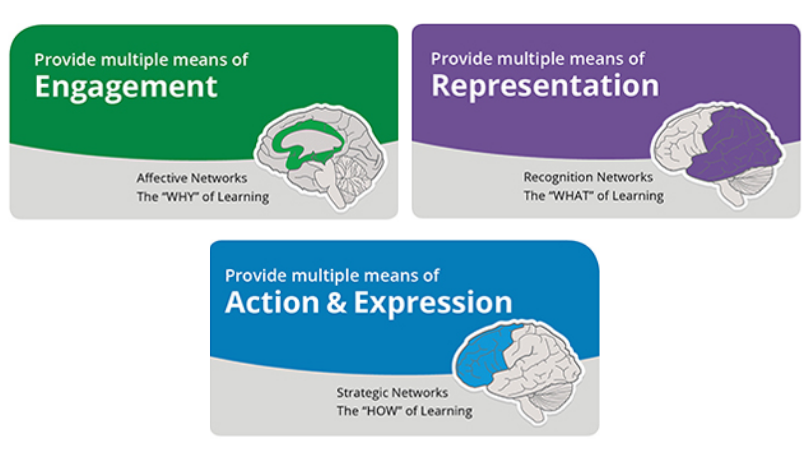Universal Design in Education
This guide focuses on the use of Universal Design (UD) practices in higher education, one of many frameworks designed to extend access and reach everyone in your classroom. You can find complementary practices and frameworks in our guide on Inclusive Teaching.
Universal Design for Learning
Universal Design for Learning (UDL) is a framework of research-based guidelines developed by the CAST Institute. CAST defines UDL as a framework to improve and optimize teaching and learning for all people based on scientific insights into how humans learn. While these guidelines are helpful for many learners, they are not a replacement for accommodations intended to meet the specific needs of an individual.
UDL guidelines include:
- Provide multiple means of engagement. Individuals come into a learning experience with different engagement abilities and needs. Provide opportunities for students to engage in your class in a variety of ways. For example, allow students multiple options for achieving a participation grade, rather than assuming everyone will demonstrate participation by raising their hand and speaking up in class.
- Provide multiple means of representation. Individuals will perceive information in class differently based on their individual profiles and needs. Provide multiple ways for students to access instructional information. For example, you might provide a syllabus as well as a video introduction to your course. For more information, refer to our guide on Creating Accessible Materials.
- Provide multiple means of action and expression. Individuals will vary in their ability to perform on a specific assessment or activity in class. Give students choice about how they can demonstrate their knowledge of the course material. Make sure that the assessments align with articulated learning goals, and that there are no unintentional barriers to students demonstrating their understanding.
Universal Design for Instruction
Universal Design for Instruction (UDI) originates from a project at the Center for Post Secondary Education and Disability at the University of Connecticut. UDI principles build on guidelines from the Center for Universal Design and, according to Scott, Shaw, and McGuire (2001), include:
- Equitable use: Instruction is designed to be useful to and accessible by people with diverse abilities.
- Flexibility in use: Instruction is designed to accommodate a wide range of individual abilities.
- Simple and intuitive: Instruction is designed in a straightforward and predictable manner, regardless of the students’ experience, knowledge, language skills, or current concentration level.
- Perceptible information: Instruction is designed so that necessary information is communicated effectively to the student, regardless of ambient conditions or the student's sensory abilities.
- Tolerance for error: Instruction anticipates variation in individual student learning pace and prerequisite skills.
- Low physical effort: Instruction is designed to minimize nonessential physical effort in order to allow maximum attention to learning.
- Size and space for approach and use: Instruction is designed with consideration for appropriate size and space for approach, reach, manipulations, and use regardless of a student's body size, posture, mobility, and communication needs.
- A community of learners: The instructional environment promotes interaction and communication among students and between students and faculty.
- Instructional climate: Instruction is designed to be welcoming and inclusive. High expectations are espoused for all students.
